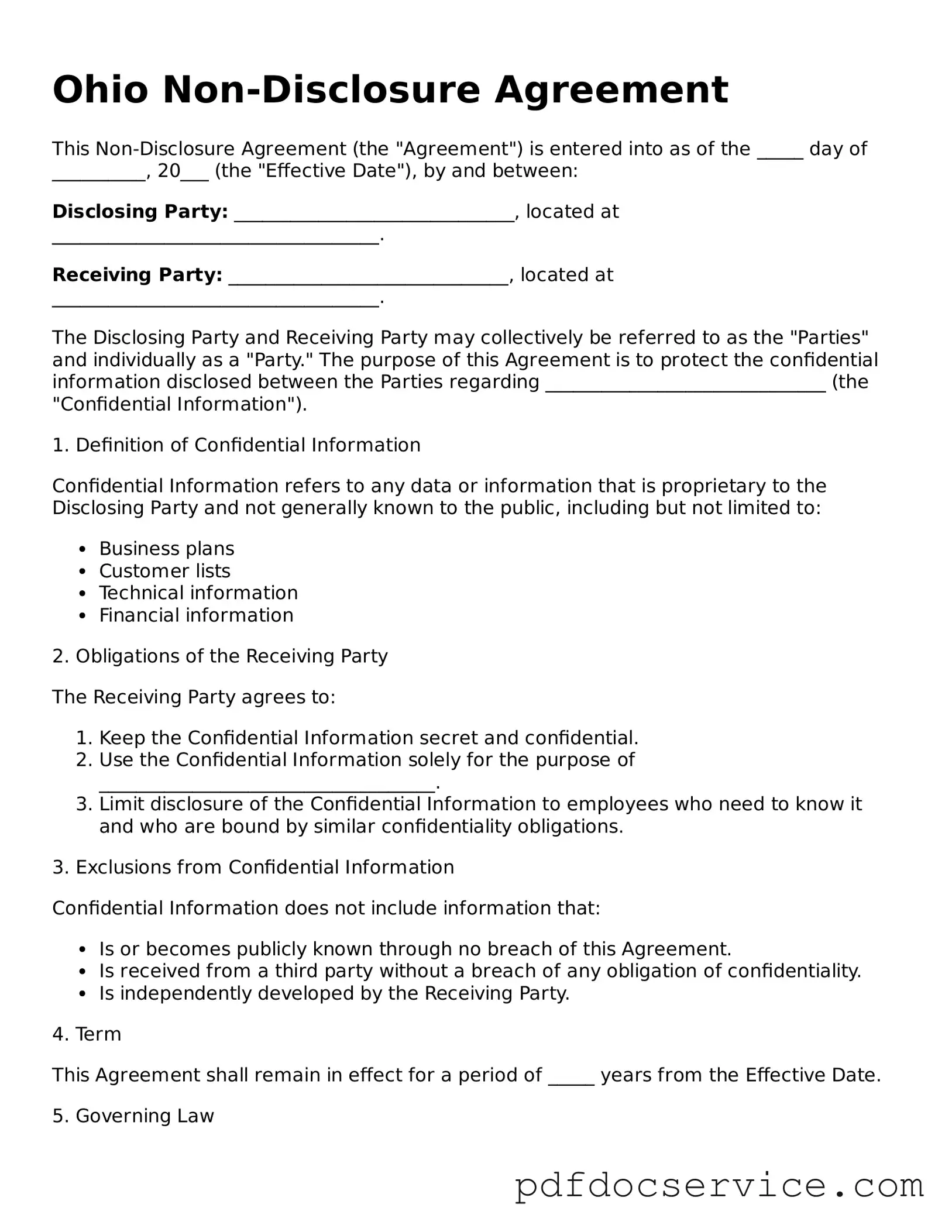What is a Non-disclosure Agreement (NDA) in Ohio?
A Non-disclosure Agreement (NDA) is a legal contract designed to protect confidential information shared between parties. In Ohio, this agreement is commonly used in business settings to ensure that sensitive information, such as trade secrets, client lists, or proprietary data, remains confidential. It establishes clear boundaries regarding what information can be disclosed and under what circumstances.
Who typically uses an NDA in Ohio?
NDAs are utilized by various parties, including:
-
Businesses looking to protect their intellectual property.
-
Employers and employees during the hiring process.
-
Contractors and freelancers working on sensitive projects.
-
Investors and startups discussing potential investments.
The NDA should specify what constitutes confidential information. This may include:
-
Business plans and strategies.
-
Financial data and forecasts.
-
Customer and supplier information.
-
Technical data, including designs and processes.
It's crucial to clearly define what is considered confidential to avoid misunderstandings.
How long does an NDA last in Ohio?
The duration of an NDA can vary based on the agreement between the parties. Typically, an NDA remains in effect for a specified period, often ranging from one to five years. However, some agreements may state that confidentiality obligations continue indefinitely, especially for trade secrets. Always review the terms carefully.
Can an NDA be enforced in Ohio?
Yes, NDAs can be enforced in Ohio courts, provided they meet legal requirements. An enforceable NDA must be clear, reasonable in scope, and not overly broad. If a party violates the agreement, the injured party may seek legal remedies, including damages or injunctive relief.
What happens if someone breaches an NDA?
If a breach occurs, the non-breaching party can take several actions, including:
-
Seeking monetary damages for any losses incurred.
-
Requesting a court order to prevent further disclosure.
-
Terminating the agreement if specified in the NDA.
It's essential to document any breach and consult legal counsel for guidance on the next steps.
Are there any limitations to what can be included in an NDA?
Yes, there are limitations. An NDA cannot protect information that is:
-
Publicly available or easily accessible.
-
Independently developed by the receiving party.
-
Disclosed with the consent of the disclosing party.
Additionally, NDAs cannot be used to cover up illegal activities or prevent whistleblowing.
How can I create an NDA in Ohio?
Creating an NDA in Ohio can be straightforward. You can follow these steps:
-
Identify the parties involved.
-
Clearly define the confidential information.
-
Specify the obligations of each party.
-
Determine the duration of the agreement.
-
Include any legal remedies for breaches.
Consider consulting with a legal professional to ensure that the NDA meets all legal requirements and adequately protects your interests.
